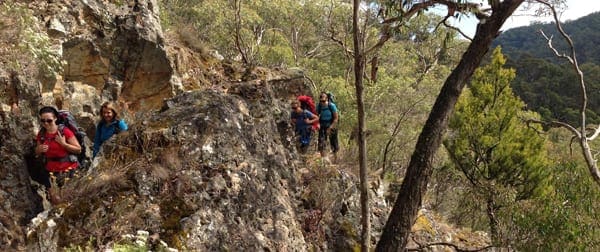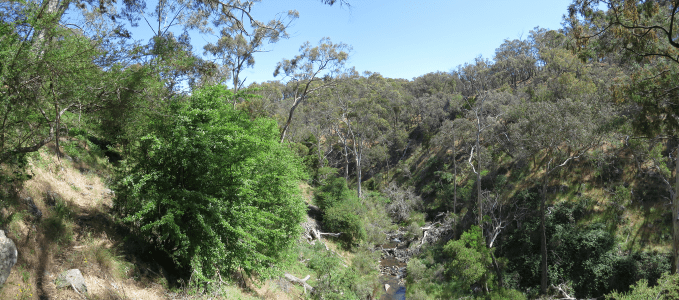Hike at a Glance
Max elevation: 0m
Min elevation: 0m
Total Ascent: 0m
Hike overview
The Great Dividing Trail Network is a pathway for walkers, mountain bikers and trail runners to central Victoria’s hidden treasures from deep gorges and fern-lined rivers to the artefacts and cultural heritage of the greatest gold rush the world has ever seen.
The trail network passes along the southern most parts of Australia's Great Dividing Range. The main section, known as the Goldfields Track, runs from Bendigo to Buninyong, and is divided into the Wallaby Track, Dry Diggings Track and Leanganook Track. A separate leg, the Lerderderg Track, branches from Daylesford to Bacchus Marsh.
The trail was primarily intended for hiking, but has proven attractive to mountain bikers, and is being further developed for that purpose.
As the tracks pass through populated areas, they are suitable for day walks. In total, there are 280 kilometres of walking track. The tracks are overseen by the Great Dividing Trail Association, a non-profit, incorporated organisation.
The Great Dividing Trail Network, of which the Goldfields Track is a part, was originally planned, developed and maintained by volunteer bushwalking members of a non-profit incorporated association, the Great Dividing Trail Association (GDTA). A linked network of public walking and bike tracks starting on the Dividing Range in central Victoria, Australia, the Great Dividing Trail Network is currently over 300km in length.
The GDTA was established in 1992 by a small group of volunteers who sought to develop and promote walking tracks linking the gold rush cities and townships of central Victoria. The network’s central hub is Daylesford on top of the southern end of east coast Australia’s Great Dividing Range. The tracks, with a few exceptions, pass through forest and public land. All of the tracks feature mining artefacts dating back to the gold rush era in the mid-19th century.
The Great Dividing Trail Network (GDTN) consists of five individual tracks. For a map of the network click here.
The southernmost track is the Lerderderg Track, which starts in Daylesford at a new trailhead at the Bridport St Lookout above Lake Daylesford. It can be accessed at the halfway mark from Blackwood and the final trailhead is the Bacchus Marsh railway station. Posts marking the track are blue-topped. Track maintenance and promotion is the responsibility of the GDTA in association with the land managers.
1. Lerderderg Track: Lake Daylesford to Bacchus Marsh Station (87km)
Four other tracks form the 210km Goldfields Track, which stretches from Mt Buninyong through the gold rush era towns of Ballarat, Creswick, Daylesford and Castlemaine to Bendigo.
2. Eureka Track: Mount Buninyong to Creswick Station (43km)
3. Wallaby Track: Creswick Station to Lake Daylesford (52km)
4. Dry Diggings Track: Lake Daylesford to Castlemaine Station (58km)
5. Leanganook Track: Castlemaine Station to Bendigo Station (61km)
Overall marketing and promotion of the Goldfields Track is the responsibility of Goldfields Track Inc (GTI), a committee of representatives nominated by land management bodies. It includes members of the GDTA and community reps. The GDTA initiated formation of the GTI in 2010.
Gallery
Got some great shots from this hike? Upload your photos here to inspire others and show off the beauty of the trail!
Uploading your photos doesn’t mean you lose ownership. You can be credited for your contributions, and you can request removal at any time.
Walk map and GPX file
It looks like I don’t have a GPX file for this trail yet. If you have one to share, please email it to me! I’ll verify it against official maps before adding it to help other hikers have a safer, easier experience. Thanks for contributing to a better hiking resource.
Content use
Every trail on this site has been personally mapped and refined to support Australia’s hiking community. While some info comes from land managers, each listing reflects significant personal work. Please don’t upload GPX files or content from this site to AllTrails or any other platform. This is a free community initiative—your respect helps keep it that way.
Getting there
Closest towns to this walk: Ararat, Ballarat, Hamilton, Horsham, Port Fairy, Stawell, Warrnambool
Getting to the trailhead in Western Victoria.Similar trails nearby
Looking for hikes and trails in Western Victoria or nearby? Try these walks with a similar grade.
Track grade
Grade 3 (Moderate) - Walks for Most Fitness Levels: Grade 3 on the AWTGS represents moderate walking tracks. These are ideal for walkers with some fitness who are comfortable with some hills and uneven terrain. While suitable for most ages, some bushwalking experience is recommended to ensure a safe and enjoyable experience. Tracks may have short, steep hill sections, a rough surface, and many steps. The total distance of a Grade 3 walk can be up to 20 kilometers.
Explore safe
Plan ahead and hike safely! Carry enough water, pack layers for changing conditions, and bring safety gear like a torch, PLB, and reliable communication device. Check official sources for trail updates, closures, and access requirements, and review local weather and bushfire advice. Most importantly, share your plans with someone before you go. Being prepared makes for a safer and more enjoyable hike! Stay Safe, Explore More, and Always #ExploreSafe.
Packing checklists
What you carry in your pack depends on factors like weather, terrain, and your adventure type. Not sure what to bring? My free planning, food, and packing checklists are a great starting point, covering day hikes, overnight trips, and multi-day adventures. Use them to customise your kit and always prioritise safety.
Let someone know
Before heading out, take a moment to fill out your trip intentions form. It’s a quick way to share your hike details with family or friends. If something goes wrong, they can notify emergency services, ensuring a faster response and peace of mind. Stay safe and enjoy your adventure
Suggest an edit
Spotted a change on this trail? Maybe there are new features, the route has shifted, or the trail is permanently closed. Whatever the update, I’d love your input. Your feedback helps fellow hikers stay informed and ensures that our trail info stays fresh and reliable.
Acknowledgement of Country
Trail Hiking Australia acknowledges the Traditional Owners of the lands on which we hike and pay respects to their Elders, past and present, and we acknowledge the First Nations people of other communities who may be here today.






